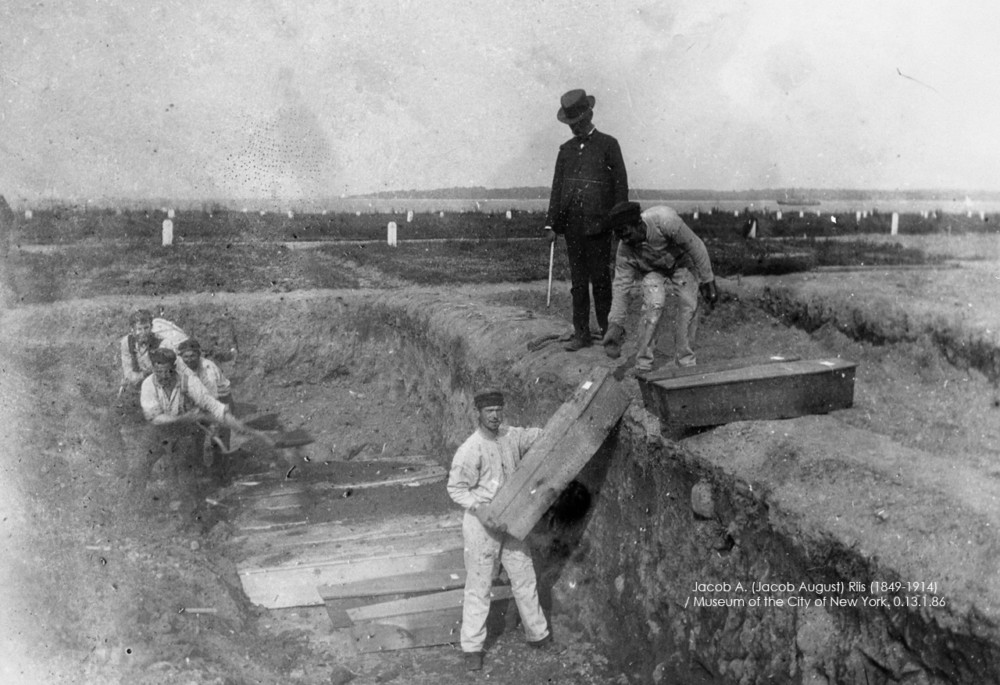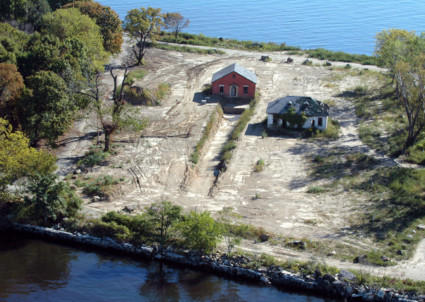City Cemetery
est. 1869
The first municipal burial on Hart Island took place on April 20, 1869, and was performed by a team of convicts from the Blackwell’s Penitentiary Workhouse on present-day Roosevelt Island (Blackwell’s Penitentiary closed after Rikers Island opened in 1927). Nearly 150 years later, the burials on Hart Island are still performed by inmates assigned by the DOC. After the Civil War, Thomas Brennan, Commissioner of the Department of Charities and Correction and Warden at Bellevue Hospital, set up the first municipal morgue in North America and adopted the Civil War practice of photographing bodies not identified by a medical examiner. Families could review photographs at Bellevue and identify their relatives and request return of their remains. At first the “unknown” were buried in individual graves and the “unclaimed” in large trenches. The enormity of these common graves made disinterment difficult, so a grid system was introduced in 1872, which is largely unchanged today. Each plot is numbered and marked, now using GPS, but previously with wood or cast concrete markers. The system was developed on battlefields during the Civil War, allowing for later disinterment should a family come forward to claim a body. In 1931, New York City began recycling graves over 50 years. This was later changed to over 25 years old, at which point the City is no longer obligated to return remains to family members. Because the graves can be reused, New York City has a sustainable system with no shortage of space for public burials. In May 1989, public burials expanded to the southern part of Hart Island formerly reserved for penal and healthcare facilities.
Image: Jacob A. (Jacob August) Riis (1849-1914) / Museum of the City of New York. 0.13.1.86

